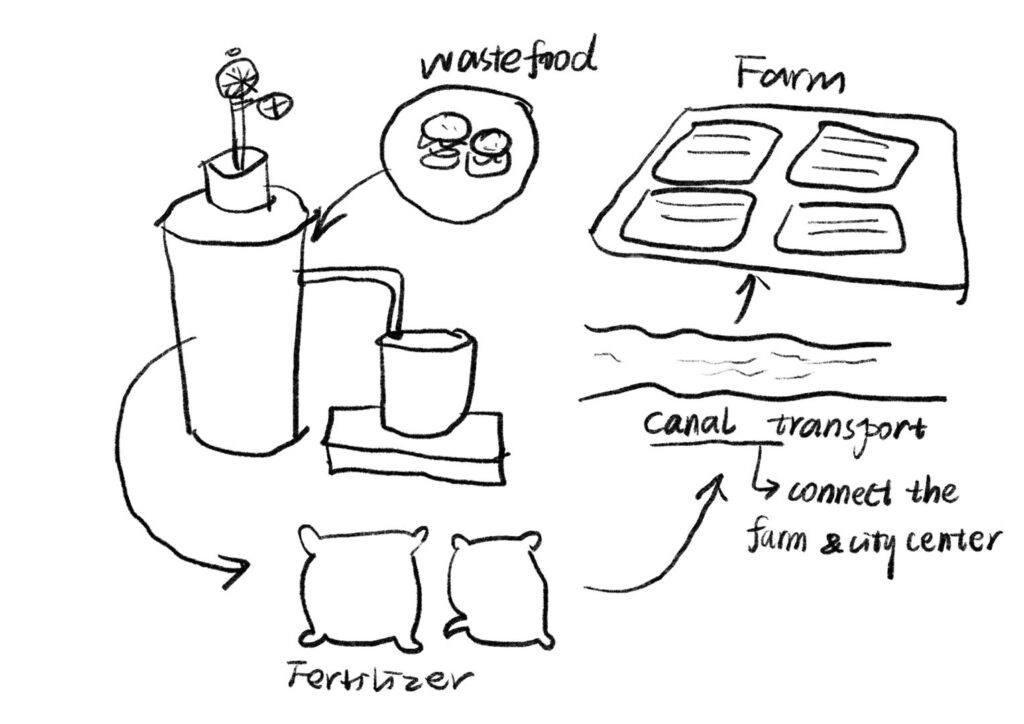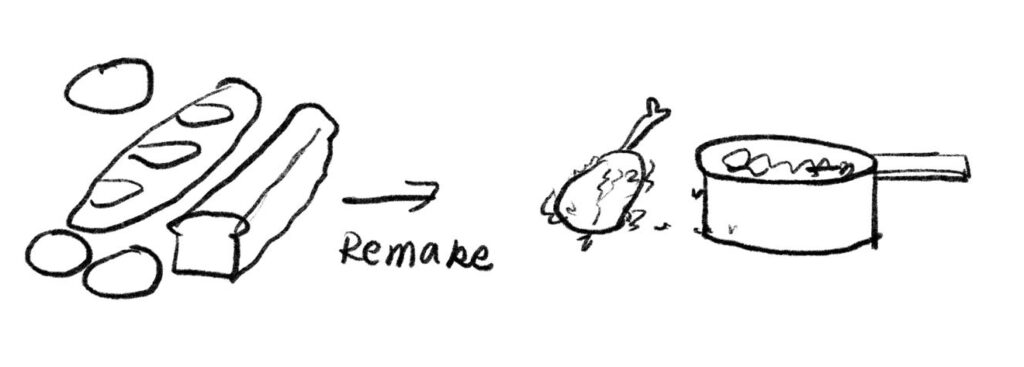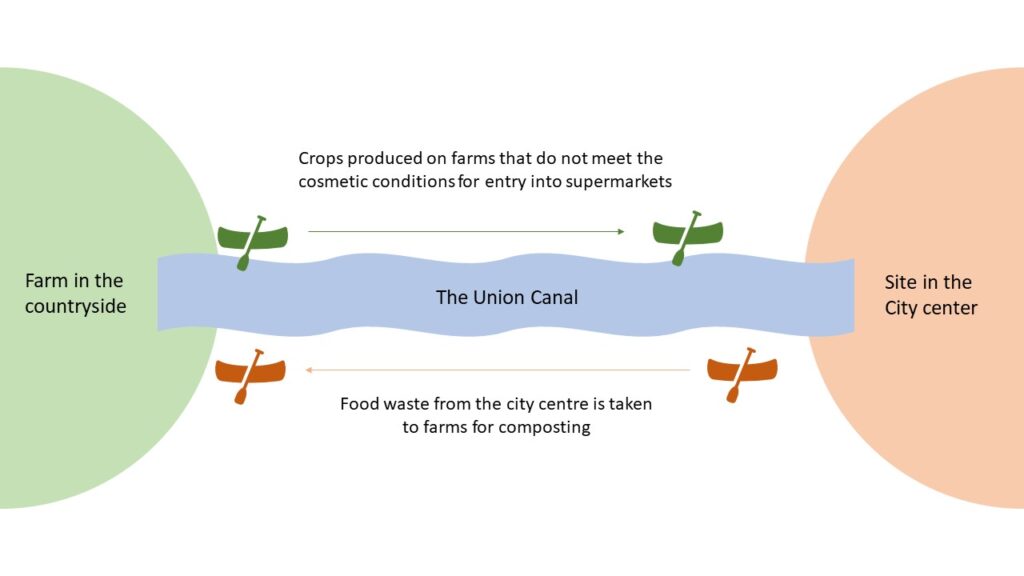Weekly overview:
In this week I tried to explore more functions and activities which can let the visitors enjoy even more. And I started to complete the conservation report and change a part of my project brief. While thinking about the relationship between architecture and food, a very pie-in-the-sky idea came to me. If buildings were as capable of digesting food as people are, then food waste could be solved very well.
Following this idea, I came up with three functional areas:
A. Composting units
1. Food scraps such as fruit and vegetable peels, coffee grounds, and eggshells can be composted. Composting turns organic waste into nutrient-rich soil that can be used in gardens or potted plants.

Idea sketch 1
B. Food Re-creation Workshop
1. Smoothies and juices: Overripe fruits can be used to make delicious smoothies and juices. Blend them with yogurt, milk, or your preferred liquid to create a nutritious beverage.
2. Bread crumbs: Stale bread can be transformed into breadcrumbs. Simply toast the bread, allow it to cool, and then blend or crumble it into fine crumbs. Use these breadcrumbs for coating meats, topping casseroles, or adding texture to dishes.
3. Pickling: Pickling is a great way to extend the shelf life of certain vegetables. You can pickle vegetable scraps like cucumber ends, carrot tops, or radish greens by immersing them in a mixture of vinegar, water, salt, and spices.
4. Homemade stock/broth: Instead of throwing away bones or meat scraps, you can use them to make homemade stock or broth. Simmer the bones or scraps with water, vegetables, and herbs for a few hours to extract the flavors. The resulting stock can be used as a base for soups, sauces, or risottos.

C. Planting units
Regrow vegetables: Some vegetables can be regrown from scraps. For example, you can place the bottom ends of lettuce, celery, or green onions in water and watch them sprout new growth. Once they have established roots, you can transplant them into soil.
A new meaning of the Union Canal




Leave a Reply